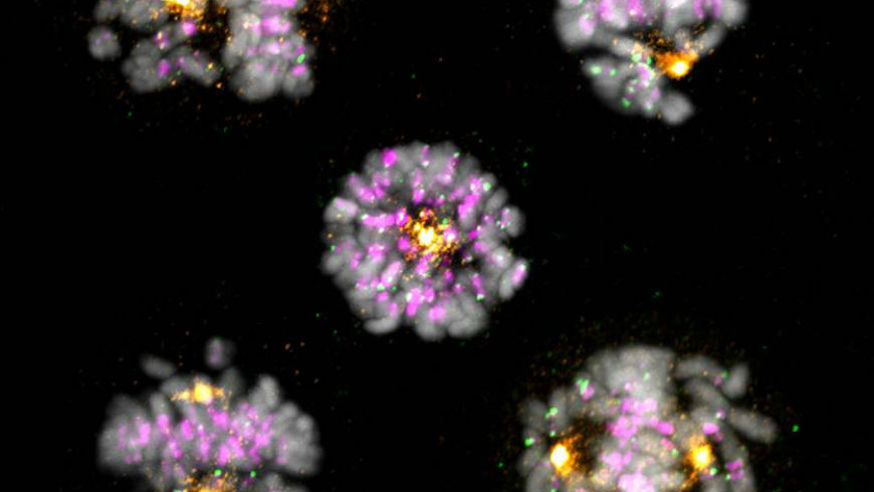How cells become cancerous
We played an important role in revealing the biochemical steps of the RAS-RAF-MAP kinase pathway. We discovered one of the major ways by which RAS oncogenes cause normal cells to become cancerous – and identified new targets for cancer treatment.

Scientists at The Institute of Cancer Research led the way in identifying some of the key genes that cause cancers – called oncogenes. Crucially, we discovered the important oncogene NRAS, and the mechanism by which members of the RAS family of oncogenes cause cells to become cancerous.
In the 1980s, two ICR researchers, Professors Chris Marshall and Alan Hall, began work on identifying human oncogenes. They introduced the DNA from human cancer cell lines into healthy cells, transforming these cells. After isolating the new DNA from these transformed cells, they used DNA probes which target the oncogenes which were known about at the time. They found similarities between the DNA they had isolated and known members of the RAS family of oncogenes and called the new gene NRAS. RAS genes are now known to be involved in around 12–15% of human cancers with NRAS mutated in about a fifth of melanomas and acute leukaemias.
An important pathway
Professor Marshall’s team then investigated how the function of the mutated NRAS protein differed from that of normal RAS, and the role it played in causing cancers. They showed that the RAS protein activates an important signalling pathway in cells called the MAP kinase pathway. Importantly in cells with normal RAS, activation of this pathway can be switched on and off but in cancer cells with a RAS oncogene the MAP kinase is always switched on and drives cancers to grow.
In collaboration with Professor Philip Cohen at Dundee University, Professor Marshall’s team delineated two molecules RAF and MEK that transmit signals from RAS to MAP kinase and showed that these molecules are essential to malignant transformation. RAF and MEK are excellent drug targets and several drugs that block their function are now in clinical trials.
This work shows how studies to understand the basic mechanisms that control the growth of cancer cells can identify new targets for drugs that can be taken forward to the clinic.
References
Hall et al. (1983) Identification of transforming gene in two human sarcoma cell lines as a new member of the ras gene family located on chromosome 1 Nature 303, 396-400 DOI:10.1038/303396a0
Leevers SJ, Marshall CJ (1992) Activation of extracellular signal-regulated kinase, ERK2, byp21ras oncoprotein. EMBO J 11: 569-574.
de Vries-Smits, AMM, Burgering, BMTh, Leevers SJ, Marshall CJ, Bos JL (1992) Involvement of p21ras in activation of extracellular signal-regulated kinase 2. Nature 357: 602-604.
DOI:10.1038/357602a0
Howe et al. (1992) Activation of the MAP kinase pathway by the protein kinase raf, Cell, 71, 335–342
DOI: 10.1016/0092-8674(92)90361-F
Cowley S, Paterson HF, Kemp P and Marshall CJ (1994) Activation of MAP kinase kinase is necessary and sufficient for PC12 differentiation and for transformation of NIH 3T3 cells. Cell 77: 841-852.

